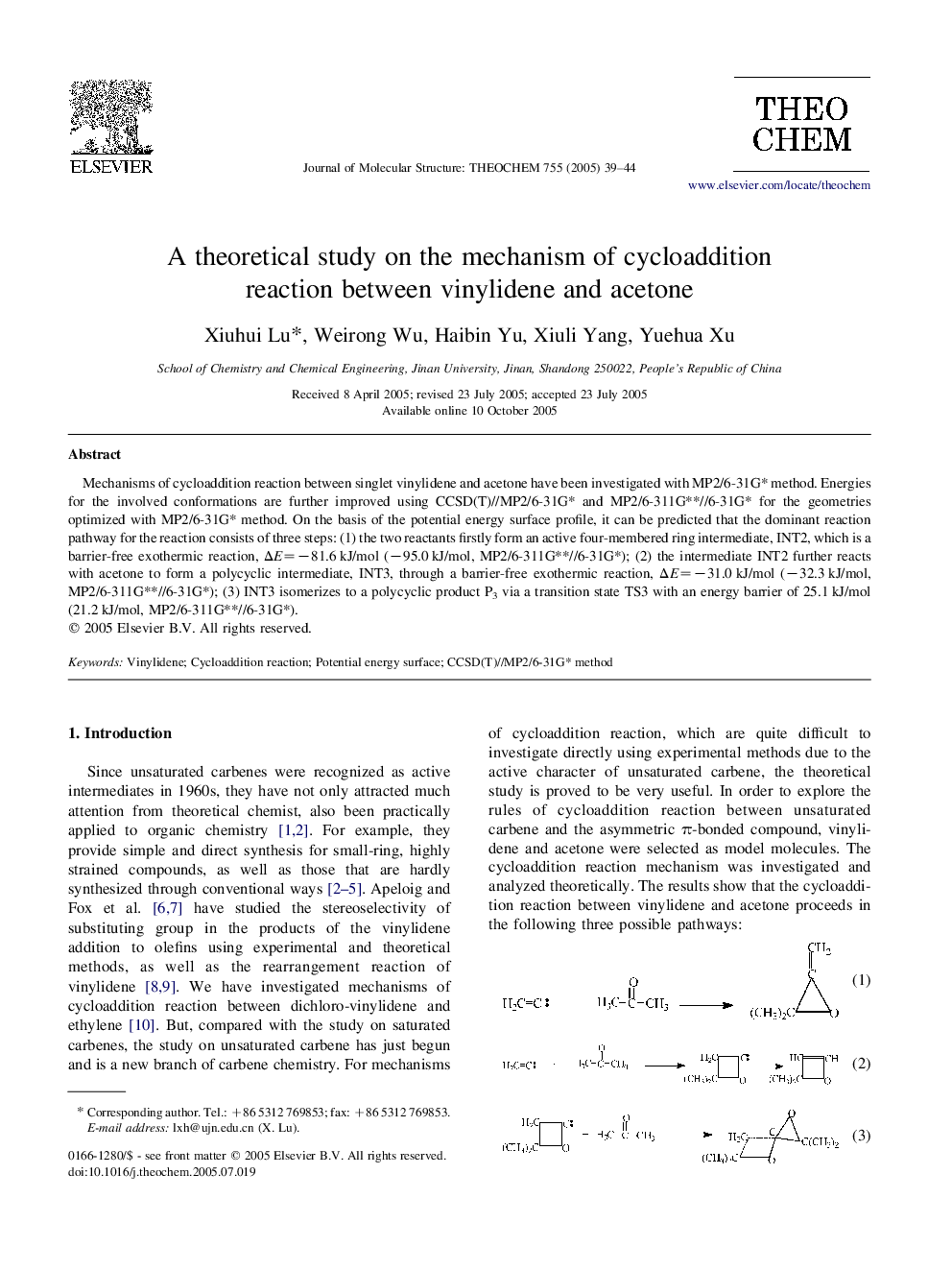| Article ID | Journal | Published Year | Pages | File Type |
|---|---|---|---|---|
| 9590517 | Journal of Molecular Structure: THEOCHEM | 2005 | 6 Pages |
Abstract
Mechanisms of cycloaddition reaction between singlet vinylidene and acetone have been investigated with MP2/6-31G* method. Energies for the involved conformations are further improved using CCSD(T)//MP2/6-31G* and MP2/6-311G**//6-31G* for the geometries optimized with MP2/6-31G* method. On the basis of the potential energy surface profile, it can be predicted that the dominant reaction pathway for the reaction consists of three steps: (1) the two reactants firstly form an active four-membered ring intermediate, INT2, which is a barrier-free exothermic reaction, ÎE=â81.6Â kJ/mol (â95.0Â kJ/mol, MP2/6-311G**//6-31G*); (2) the intermediate INT2 further reacts with acetone to form a polycyclic intermediate, INT3, through a barrier-free exothermic reaction, ÎE=â31.0Â kJ/mol (â32.3Â kJ/mol, MP2/6-311G**//6-31G*); (3) INT3 isomerizes to a polycyclic product P3 via a transition state TS3 with an energy barrier of 25.1Â kJ/mol (21.2Â kJ/mol, MP2/6-311G**//6-31G*).
Related Topics
Physical Sciences and Engineering
Chemistry
Physical and Theoretical Chemistry
Authors
Xiuhui Lu, Weirong Wu, Haibin Yu, Xiuli Yang, Yuehua Xu,
